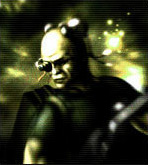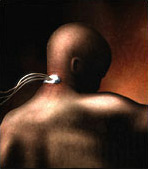Overview
A tough, no-nonsense race, the Minmatar are a determined and independent people. Their home planet of Matar is a natural paradise, although centuries of abuse have taken much from its beauty.
Of the four major races of New Eden, none has endured more tragedy and suffering than the Minmatar. Once part of a thriving and technologically capable tribal civilization, billions of Matari were enslaved by the Amarr Empire for more than seven hundred years, until a mass rebellion freed most, but not all, of those held in servitude. Initially modeling its recovery after Gallente Federation notions of democracy, the Minmatar Republic was born through the cooperation of four major tribes.
For the Minmatar, the most important thing in life is to be able to take care of yourself on your own, and although kin and family play an important role in their society, they prefer identifying themselves by the clan or tribe to which they belong. A clan can have any number of people in it, and its size is largely dictated by the main activity of its members. Most specialize in one area of activity. While those who live on a planet can focus on agricultural or industrial activity, others who travel around the world of EVE concentrate on trading, pirating, and suchlike.
A Minmatar soldier during the Minmatar Rebellion
In the distant past the clans constantly warred against each other. Since then, however, Minmatar have learned that cooperation is more important, and although the clans still try to maintain their regional and ideological identities, they act as a single unit towards other races.
The fortunes of the Minmatar have ebbed and flowed continuously. At one time they had a flourishing empire with a level of mechanical excellence never before or since seen anywhere. Later, however, they had to endure centuries of enslavement, toiling and dying for the benefit of foreign masters. Today most of them have regained their freedom, but the legacy of their enslavement has been the diaspora of the race.
The Minmatar are the most numerous of all the races in New Eden, but their vast numbers are dispersed widely and divided into many factions. While the Minmatar Republic is the official state, only a quarter of all Minmatar currently alive are part of it. A very large proportion, almost a third, remains enslaved within the huge Amarr Empire, while a fifth resides within the Gallente Federation, creating a powerful political bloc that contributes in no small part to the constant state of tension between Gallente and Amarr.
The Amarrians are fond of using mind-controlling cyber-implants on their Minmatar slaves
The remainder, who are not part of any formal organization, live as freemen throughout the world. Many are itinerant laborers, roaming from one system to another in search of work. A fair number make their living on the darker side of the law, acting as pirates, smugglers, and peddlers in all kinds of illegal goods. It is worth noting that many of the larger criminal groups in New Eden, such as the Angel Cartel include many people of Minmatar heritage among their leadership.
The free Minmatar peoples are resilient, ingenious, and hard working. Perhaps most of all they are proud, and many of them believe that democracy, though it served them well at first, will never restore what was taken from them by the Amarr Empire. As all seven tribes of Matar have united again and found a new sense of their identity in the Empyrean Age, the development of the Minmatar Republic has swung away from Gallente ideas of unadulterated democracy. The Minmatar have created a form of government truly reflective of their historical tribal culture. Almost invariably they remain deeply attached to their enslaved kindred and will go to extraordinary lengths to recover them. The Minmatar will forever resent the Amarr and yearn for the days before the empire’s accursed ships ever reached their home world.

